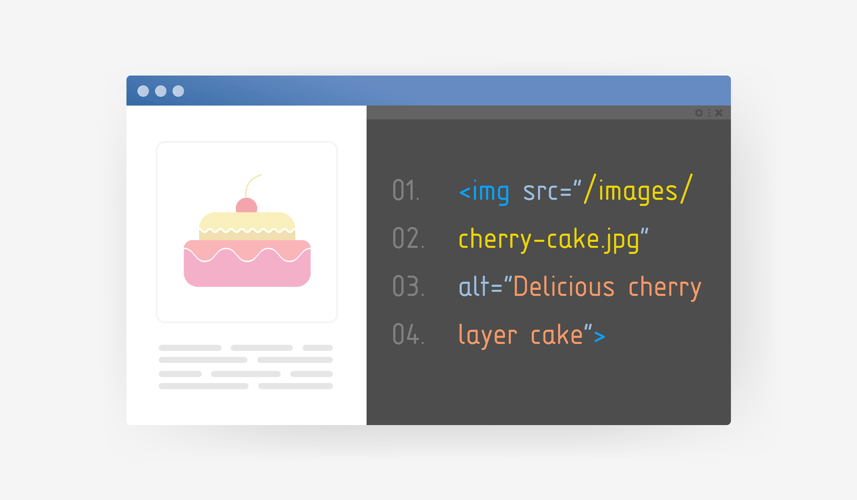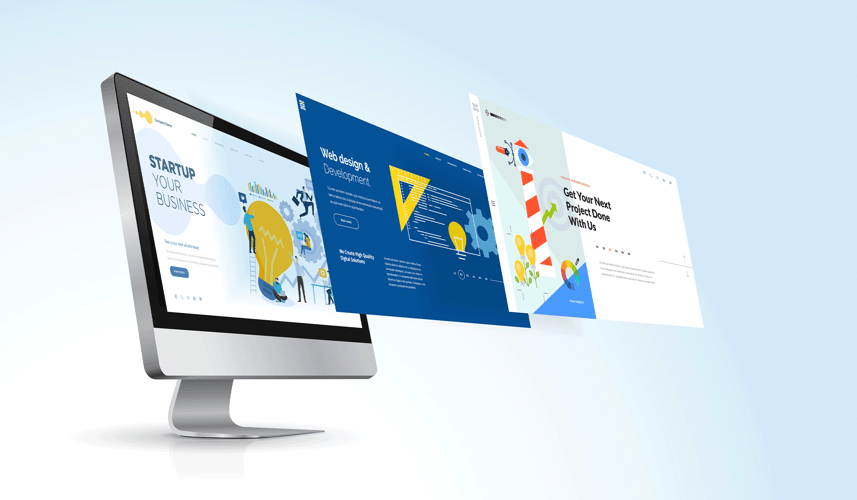Episode 41 - Top Tips for Making Sure Your Next Website Project Stays On-Time


Don't Miss An Episode, Subscribe Now

One of the biggest challenges with website projects is keeping them moving on time. Typically, we recommend a six-month timeline, which involves creating the content and getting it approved, designed, developed, and launched.
To begin, you'll need an understanding of who needs to be involved at which phases of the project and ensure you have the right people from the start. Tune in for the top dos and don'ts for your bank or credit union website project.
Transcription:
If you're looking for best practices for your bank or credit union, join us while we talk all things sales, marketing, and strategy for financial institutions. Let's make it happen with FI GROW Solutions..
Meredith Olmsted:
Hi there. I'm Meredith Olmsted, CEO and founder of FI GROW Solutions. We are a digital marketing and sales consulting company and we work exclusively with banks and credit unions, and I am here with our Chief of Strategy, Penne VanderBush. Say hi, Penny.
Penne VanderBush:
Hey there.
Meredith Olmsted:
So we were just having a really awesome conversation about, well, a few different projects that we've been managing over the last six months or so, and kind of reflecting on things that we've been learning around how to keep projects moving forward on time. Specifically, we were talking about website projects. So I was like, let's hit record on this. There's some good takeaways here for our users, for our readers, people who visit and people who are just contacts for us. So I wanted to share this with other marketers in the industry because I think this is really useful.
So one of the biggest challenges with website projects is keeping them moving on time, and we always find, hey, we feel like we can build a really solid digital branch for our clients, start to finish, we should be able to do it no problem, like six months. And that sounds like a long time, but it's a huge lift. So it's a really big project. There's a ton of people involved and I'm talking writing 80 to a 100 pages of content, getting it all approved, getting it launched, full redesign, all the development, everything. Six months, you should be able to do it, no problem.
But I'm constantly hearing from people and we are running into it too, who don't meet that six month kind of timeframe for website projects. I just was talking to a colleague at a credit union out in Arizona. They started a website redesign in January and it didn't launch until September or October or something crazy like that. Not with us but with somebody else. So I was like, wow, what are the lessons that we're learning about how to keep these big projects moving on time? So Penne, right out of the gate, you had some really good suggestions. Where do people need to start?
Penne VanderBush:
Yeah. I think starting right from the beginning, having the right people in the room. We've definitely experienced times where we're at kickoff meetings, we're starting wireframe initial design and layout, just strategy meetings. And then we'll find out that we're missing people who are going to be decision-makers or who have value add at that stage or that we have far too many people in the room. And we've definitely gone to kickoff meetings before where there's a large audience in the room and everyone has shown up and it's almost too many opinions too early to move things forward.
So I think it's an understanding of who needs to be involved at which phases of the project and make sure you have the right people from the start, whether that's removing some people from the meetings or bringing in some key stakeholders who should be there.
Meredith Olmsted:
Yeah, I sometimes say lean towards keeping executive team members off of the initial phases and really only including them once you have a solid direction and you're moving forward into almost final approvals for development really, where you have flushed out the entire look and feel of the project, the home pages, product pages, all of that. And then bringing in just for some final buy-in and maybe a few little tweaks. But I'd say rule of thumb, no reason for a CEO to be involved in the design phase really. It just slows things down and honestly, can feel like it might not be the best use of his or her time.
Penne VanderBush:
Right. And I think in order to accomplish that, you need to have conversations leading up to that point in which the strategy of the site, the new digital branch has been determined. You know there's going to be lead capture, you know it's going to be ADA compliant, you know it's going to be responsive. You have to trust the agency that you're working with to be delivering a quality end product. Because I feel like a lot of the times when we see a lot of executives into the room, they're trying to check these boxes that really should just be standards, but yet many people aren't developing with all of the standards that should be there.
So I think when you have the right agency helping you who really understands all of that, then the executives shouldn't feel like they have to be in the room to ensure that those boxes are ticked.
Meredith Olmsted:
Yeah. The other thing too is making sure your brand is fully intact and ready for a new project, whatever kind of project you're going through. Because a lot of people, I think, come to website projects and development and the design phase of it and they're like, "Oh, let's redo this." And then you go try to reference their brand guide or the look and feel that they've had in the past and they want to go in a completely different direction, but you don't really have capacity or the time built into the project initially for a rebrand.
Penne VanderBush:
Right.
Meredith Olmsted:
So if you need a rebrand or need to spend some time rebranding before you go into a website project, that might be a whole separate project.
Penne VanderBush:
Absolutely. I think we need to hit record on hitting record on the episode on what to do before you start your website project?
Meredith Olmsted:
Yeah, really.
Penne VanderBush:
Because there are so many things that need to be in place before you even get to this point that we're talking about today.
Meredith Olmsted:
Yeah. So once you're there and you've got the right people in the room, what else do we need to make sure that that things keep moving forward?
Penne VanderBush:
Yeah, you definitely need the right project management tool and there's so many project management tools out there, so it doesn't really matter which one you're using, as long as it works and it's effective. I think it's finding that balance of how to use the tool. If you spend too much time training everybody on how to use a brand new project management tool, then it can get clunky. You want to keep it as simple as possible, but you need it to also be accurate and detailed.
So we like to... When we organize our projects, there's a visual aspect and it kind of just moves left to right across the screen for every single page on the website. So you can see all of the deposit pages or consumer loan pages visually at a glance. You can see where they are in the process, which ones are still having content drafted, which ones are over in compliance getting approved. So that simplicity is fantastic, but then also within that, be able to have a spot where you can click on, let's say that auto loan page and it opens up the details and the notes and the conversations that have been had about, "Let's do this on the page, let's not do this on the page, make sure this is included on the page."
Meredith Olmsted:
Yeah.
Penne VanderBush:
And so I think that's really important but you brought up a great point too, around multiple lines of communication that inadvertently can sometimes-
Meredith Olmsted:
Slow things down.
Penne VanderBush:
Mucky the waters, right?
Meredith Olmsted:
Yeah. So sometimes we've had where you'll have people trying to instant message about details or a bug or something or an issue on a page, and then they might shoot an email to a few people involved, and then they might put a comment in, Asana is our project management tool. They might put a comment on the page in the project management tool. So now you've got three different conversations about the exact same issue. Disaster, definitely very inefficient. You want to make sure you consolidate your lines of communication around the project down to one consistent main area to drive communication. And if you have to communicate in another one, just make sure you bring the takeaways back to that main line so that you have someplace where you have a record of all the back and forth.
The other thing I love about project management tools is a lot of people are super visual. It's really nice to have that across. It's nice if there's dates involved, maybe there's a way to calendar things if not, not the end of the world. But the other thing that I like is having things color coded so you can really see, okay, everything that's green is done, everything that's red needs attention, orange, yellow, whatever, you can add some layer of color coating. Not to make things complicated, to make it more clear, to make it more glanceable, easier to see where your attention needs to go immediately. So that can be very helpful.
Penne VanderBush:
Absolutely, and that's huge. That's huge in the approval process because typically the people you've got marketers or the agency that you're working with is developing, your SEO content, SEO rich, you're checking all the boxes behind the scenes and in the code and then you're on page content. But then that needs to move into potentially an executive member who is the lead of, let's say consumer loans, or it needs to go over to compliance, whether you have internal compliance resources or external compliance resources.
And so these are people who probably have not been involved since the start, but now they're needed. The content is ready for final approval based the department heads manager of that department, when they can jump into a project management software and it's very clear based on the columns and the color coding, I can see the content's been drafted, I can see the images have been loaded, I can see the lead capture's done. Now here I am, now it's my turn and I'm going to go in and I'm going to review the page and then I'm going to mark it as approved and then I can see when I'm done, it's going to jump to compliance and then when compliance is done.
So it's kind of like that if you can have people step in through the approval process later in the game into your project management software tool and it's so easy for them to understand, that is huge in continuing to stay on track with the timeline.
Meredith Olmsted:
I will say the fewer people involved in the approval process, the better. So we have seen approval processes that involve eight different steps, very, very impactful, can be very negatively impactful on timeframes. We did just recently have to delay a launch by a few weeks, not terribly, but by a couple weeks because of internal approvals and also internally crafting content, writing content that was taking longer than it should have. So that's probably the last thing I'll say is... Well, there's two last things, but definitely getting somebody to help, bringing in a third party to help write content, to help push your decision-makers and your department chairs forward when it comes to approvals to make sure compliance is getting things done and back to you in a timely manner. That's where we definitely come in. We do the heavy lifting when it comes to actually writing the on page content for our clients. It's a huge, huge win when it comes to keeping projects on schedule.
And then the last thing, which is like you always say this one about when it comes to making decisions pretty much around anything, but let's talk about website projects.
Penne VanderBush:
Right. Yeah. So consent versus consensus. If you want consensus of a full room of people with 15 different opinions, you'll be in that room all day long. And so at each approval step, whether it's back at wireframe and design, or if it's closer to final launch, there needs to be somebody who is making the final decision. And what you're asking the people in the room for, is there consent to move forward with that decision? Which means if there's not a business reason to stop this decision, if this decision is not inappropriate in some way, it doesn't meet compliance or regulation or really is wrong or incorrect, then yeah, you can absolutely speak to that and stop it. But otherwise you just, "Do I have your consent to move forward with this decision that I made?" And the people in the room have to be willing to give their consent and say, "Yeah, personally it's not my personal choice. I wouldn't have picked that design. I wouldn't have worded it that way," but it's not wrong, it's not incorrect or against our brand or anything like that.
So I think that's really important, not only in website projects, but really in every meeting and understand every culture-
Meredith Olmsted:
100%.
Penne VanderBush:
If you can adopt, we're not in this room for complete 100% consensus from everybody here to get everyone's opinion to align. What we're here to do is put something on the table, a business matter, make a decision, and just ask for people's consent to move forward with that. And I think that's really big in keeping website projects.
Meredith Olmsted:
Huge.
Penne VanderBush:
On time because so many opinions can factor in with a digital branch build.
Meredith Olmsted:
And design is so subjective. That's what we always try to remind our clients of, "Look, this is a very subjective process. If you go out and survey your members to see of all of these five logos, which one do you like the most? You're going to get people who like them all." So instead, let your trained professionals who know design, who know marketing, who know market research and your membership really make those hard, more subjective design decisions and then keep the approval process around making sure that you're checking all the boxes for compliance and that the user experience makes sense.
Penne VanderBush:
Absolutely.
Meredith Olmsted:
That it's easy, that you haven't put up any unforeseen roadblocks around if somebody lands on a page and they can't find something they're looking for. That's really what's key, is making sure that your digital branch is intuitive. It's easy for the user to navigate and understand, and it also gives them a feeling of trust, that they're confident in your institution and they know that you all are a reputable institution that has their best interest at heart at the end of the day.
Penne VanderBush:
Absolutely.
Meredith Olmsted:
So awesome. All right. These are great tips. Thanks so much, Penne.
Penne VanderBush:
Yeah, of course.
Meredith Olmsted:
We have a lot of other really great podcasts on the website. Please visit us @figrow.com and check out some of our blogs and our tips. All of our podcasts are like this length, 10 to 15 minutes, so pretty easy to navigate through. So good luck with all of your upcoming projects and in the meantime, let's just all get out there and make it happen.








Blog comments